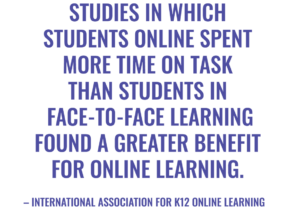This post is part one in a series on copyright compliance online.
It is very important for teachers, specifically online teachers and instructional designers, to understand copyright. As students begin to utilize resources they find online, such as images, for their projects and presentations, it is imperative they have a good understanding of copyright and public domain, as well. When we design online content, we are constantly faced with the opportunity to uphold or violate copyright law. We must be aware of the types of images, music, and primary sources we use in our online work.
You may have heard of the term “public domain.” An image or primary source that is considered public domain is non-copyrighted material and may be used freely without attribution required. There are two characteristics that make a resource public domain:
- published before 1923
- created by the federal government
If a resource you find online meets either of these criteria, you are free to use it in your work.
There are many valuable primary sources that are not considered public domain. Just because they are not under public domain does not mean that you cannot use them. Public domain resources can be used freely without worry. Other copyrighted primary sources may be linked to in your course or presentations/projects, but they cannot be reproduced. For example, instead of taking a screenshot of that document and inserting it into your class, provide a link directly to the material.
Linking to the resource or using public domain resources prevents you from having to cite a source. To summarize, always ask yourself these three questions before determining whether you need to cite your source:
- Will I just link it?
- Was it published before 1923?
- Was this created by US government employees?
If the answer to any of these questions is yes, then you’re safe. However, if you answer no to all of those questions, you must consider fair use before posting and then you must provide attribution.
The next post in this series will cover information on fair use.



